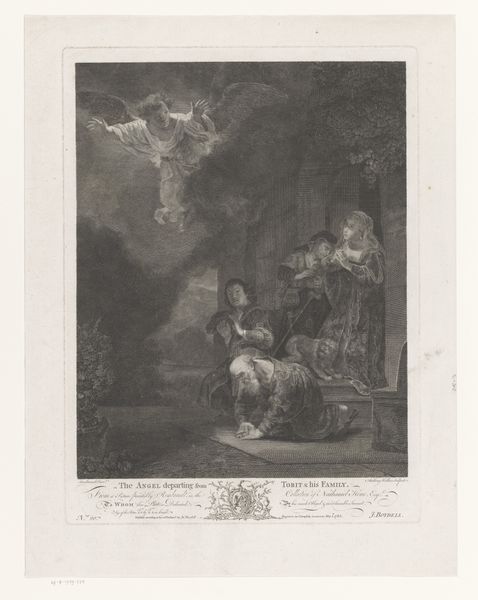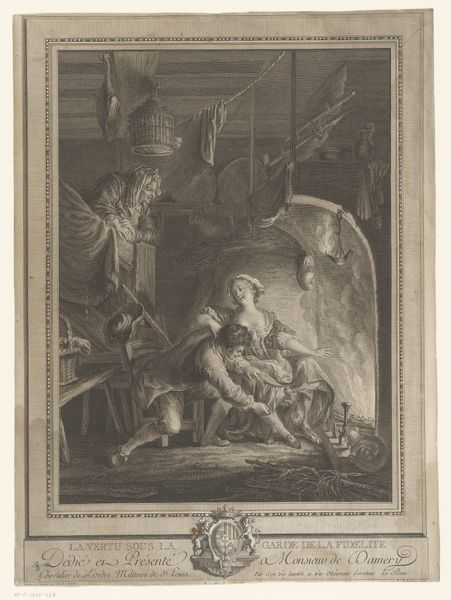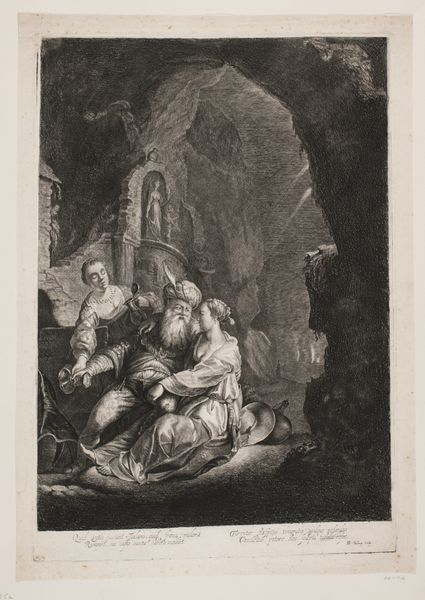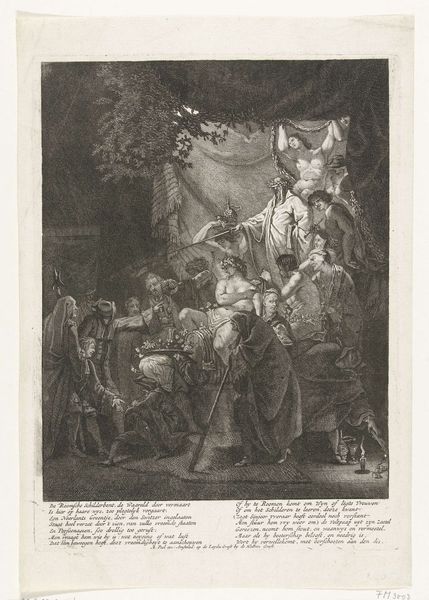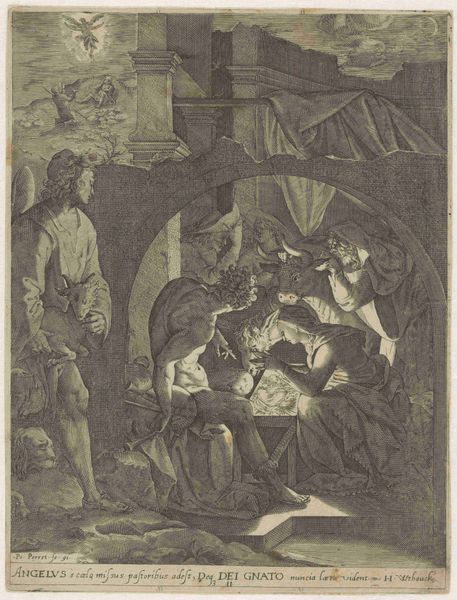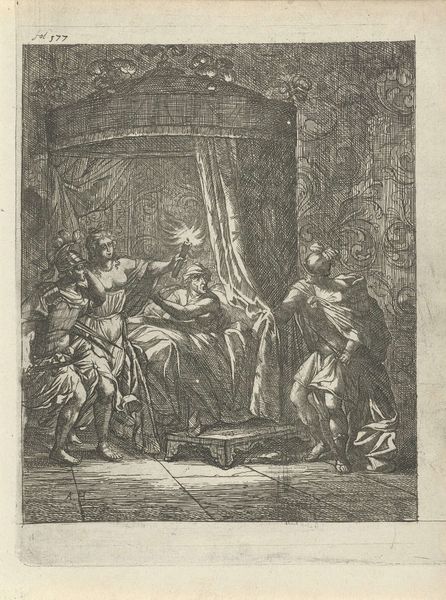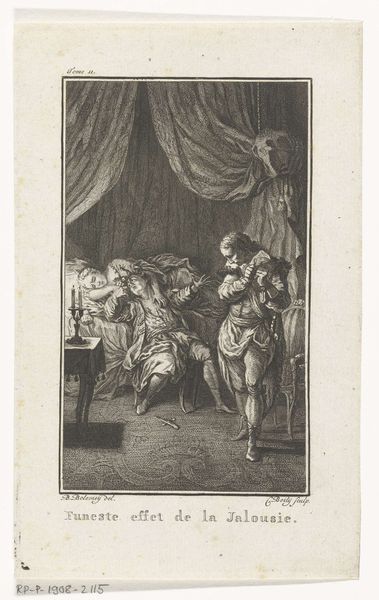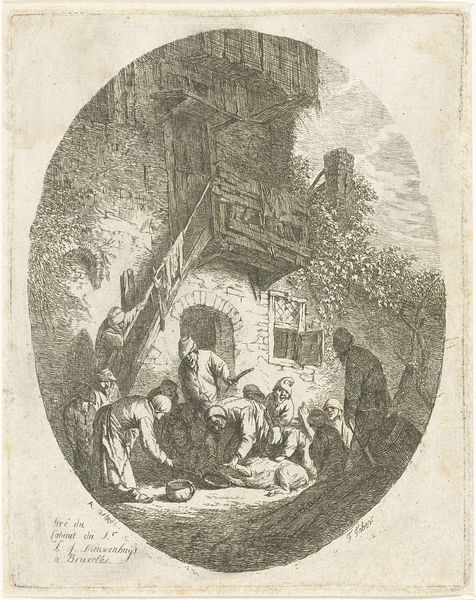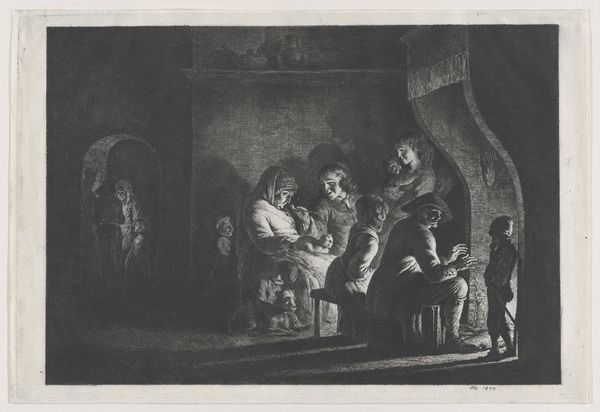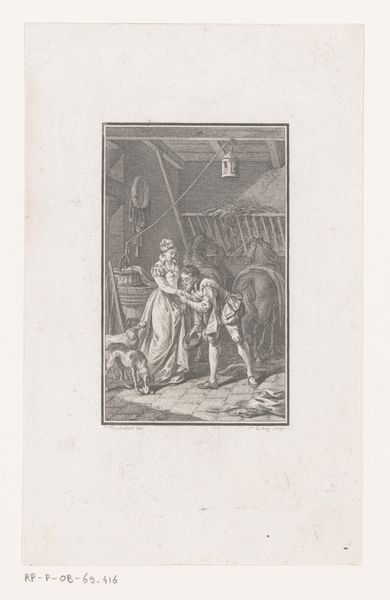
drawing, print, etching
#
drawing
#
narrative-art
#
baroque
# print
#
etching
#
dog
#
landscape
#
figuration
#
men
#
history-painting
#
angel
Dimensions: Sheet: 12 3/16 x 9 1/2 in. (31 x 24.1 cm)
Copyright: Public Domain
Curator: This etching, crafted by Antoine de Marcenay de Ghuy in 1755, is titled "Tobias Returning Sight to His Father." It resides here at the Metropolitan Museum of Art. Editor: It’s a rather dramatic scene, wouldn't you say? The figures are huddled together in a dark, cavernous space. The strong contrast emphasizes their vulnerability. Curator: Absolutely. Ghuy masterfully uses light and shadow, a hallmark of the Baroque, to draw the eye to the central action – the miraculous healing. The setting evokes a sense of humble domesticity; note the dog in the foreground, a symbol of loyalty and faithfulness, key elements of this narrative. Editor: Yes, there is something so compelling in this very act. As we consider accessibility, the scene really asks, ‘Who deserves to see?’ Tobias embodies this deeply human and societal question about justice, visibility, and restoration, and the distribution of that restoration. Curator: Indeed, the etching depicts a scene from the Book of Tobit, where the angel Raphael instructs Tobias to use fish gall to cure his father's blindness. Ghuy was interested in representing these moral tales, situating the narrative within the social mores and belief systems of 18th-century France. It provided moral instruction within a system of patronage where these sorts of stories could further your career and provide you security and further commissions. Editor: The presence of the angel suggests divine intervention but can also speak to the narratives that have the loudest voice, like the church in the time. It is also intriguing how Ghuy chooses to frame it within such an ordinary, seemingly precarious space. We could see the architecture and landscape in the background as indicative of the socio-economic reality of the majority who seek moments of miraculous agency. Curator: I see that too. This kind of moralizing history painting or print provided an opportunity to think about faith in a changing world that emphasized an appreciation of reason over the miracles in the every day. It gives us today a chance to think about this kind of reception from both commoners and patrons. Editor: Looking at this piece, I’m left wondering about the relationship between faith and everyday life. The intimate setting makes the divine tangible but also pushes us to think more about who is excluded from this divine moment. Curator: Yes, thinking about Ghuy’s historical context as we consider our own—the print becomes a reflective portal, illuminating faith, healing, and what we ask from life.
Comments
No comments
Be the first to comment and join the conversation on the ultimate creative platform.
